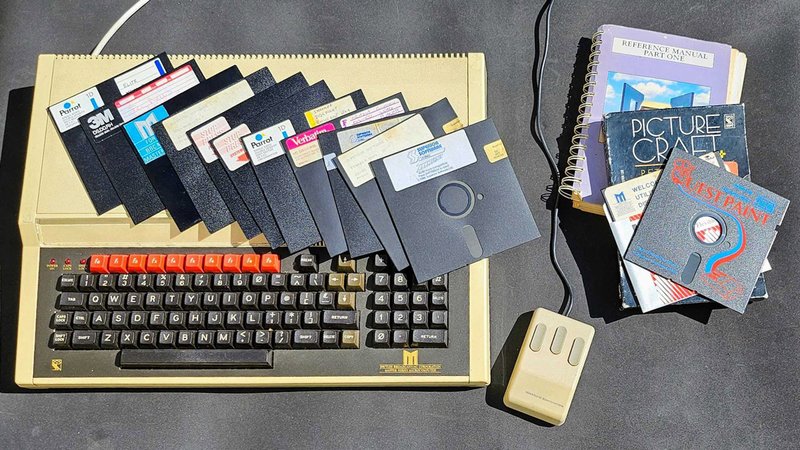In the fast-paced world of technology investments, timing and market understanding are everything. This truth is perfectly illustrated by the fascinating case of the Amiga 600, a product that spectacularly failed upon release yet has found remarkable posthumous success in today’s retrocomputing market.
As an analyst tracking both current tech trajectories and historical business lessons, I find the Amiga 600 particularly instructive. Released in March 1992, this compact computer embodied Commodore‘s fundamental misunderstanding of its own market position and consumer expectations at a pivotal moment in computing history.
600 – A Product Misaligned with Its Era
The Amiga 600 represented a profound strategic miscalculation. Commodore essentially repackaged 1985 technology in 1992 – a period when VGA graphics and 386 processors were becoming standard. At its $500 price point (approaching $1,000 with necessary peripherals), consumers could instead purchase PCs offering superior specifications and expandability for comparable investment.

Market conditions had fundamentally shifted. The Amiga 600’s Motorola 68000 CPU running at 7MHz was competing against 16MHz 386SX processors, creating an unmistakable value perception gap. While the Amiga ecosystem had thrived in earlier years by delivering enthusiast-designed systems at competitive price points, this approach collapsed when the underlying technology fell too far behind competitors.
600 – Business Strategy Breakdown
From an investment perspective, Commodore’s failure provides valuable lessons in product strategy:
-
Misreading the Pricing Landscape: The Amiga 600’s price positioning ignored competitive reality. When technological fundamentals shift, pricing must respond accordingly.
-
Ecosystem Disruption: By changing expansion capabilities from the successful Amiga 500, Commodore abandoned compatibility with existing peripherals. This destroyed crucial network effects that had supported earlier success.
-
Positioning Confusion: Initially conceived as the budget-oriented “Amiga 300,” its release as the “600” created customer confusion, suggesting an upgrade when it offered fewer capabilities in many respects.
The market response was predictable. Sales faltered, and Commodore discontinued the model in 1993, with remaining inventory still unsold when the company folded in 1994.
The Retrocomputing Renaissance
What makes this story particularly interesting from a market analysis perspective is the product’s unexpected second life. Today’s retrocomputing enthusiasts prize the Amiga 600 precisely because of features that were liabilities in 1992 – particularly its compact form factor.
“It’s the perfect retro Amiga for today,” notes retrocomputing expert Dave Farquhar. This rehabilitation illustrates how market context fundamentally alters product valuation. Where once the Amiga 600’s limitations compared to contemporaneous PCs made it uncompetitive, today’s collectors value its aesthetic, historical significance, and compactness.

Investment Lessons for Today’s Tech Landscape
The Amiga 600 saga offers several actionable insights for current technology investment strategies:
-
Timing Determines Everything: A product’s success depends not just on its inherent qualities but on its relationship to contemporary alternatives and expectations.
-
Understand Your Value Drivers: Commodore failed to recognize that its previous success came from delivering enthusiast-designed computers at competitive price points.
-
Beware Ecosystem Disruption: Breaking compatibility with existing peripherals and software can undermine otherwise solid products.
-
Long-Term Value Can Be Unpredictable: Markets occasionally reassess “failures” positively as priorities shift. The factors driving the Amiga 600’s current desirability couldn’t have been anticipated in 1992.
-
Cost-Cutting Must Preserve Core Value: Commodore’s attempt to reduce costs fundamentally compromised what customers valued about their products.
For investors and business leaders evaluating technology companies today, the Amiga 600 story suggests looking beyond specifications to understand market timing, ecosystem strength, and value perception. Companies making similar strategic errors today – misunderstanding their own success factors, breaking ecosystem compatibility, or mispricing relative to competition – risk similar market rejection.
The ultimate irony of the Amiga 600 is that its compact form factor, dismissed as a liability in 1992, would become standard in computing just years later. Sometimes visionary products simply arrive before markets are ready for them – a timing problem that even the most brilliant engineering can’t overcome.
As we evaluate today’s technology landscape, we should remember that market timing and alignment can trump even substantial technical advantages. The products that succeed aren’t necessarily the most advanced, but those that most effectively address contemporary needs at appropriate price points.



